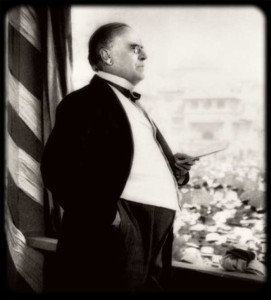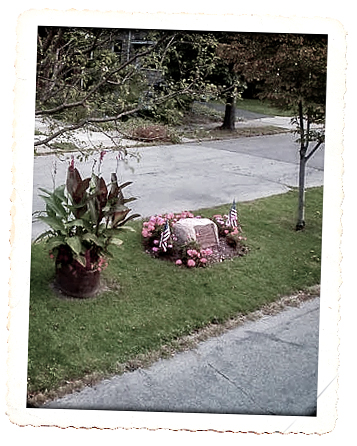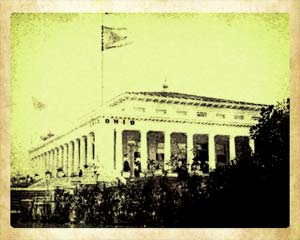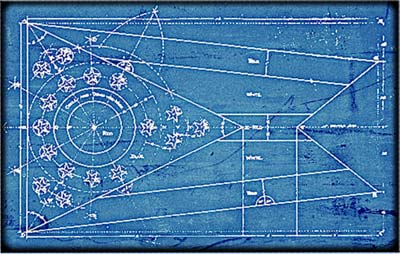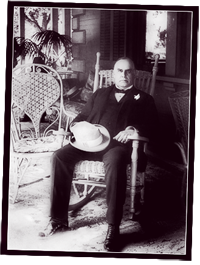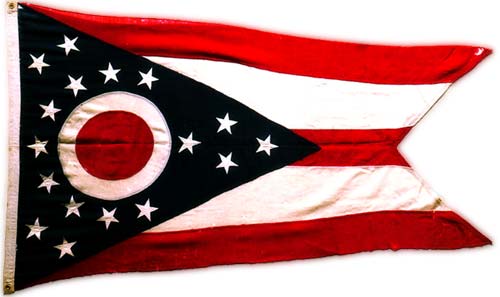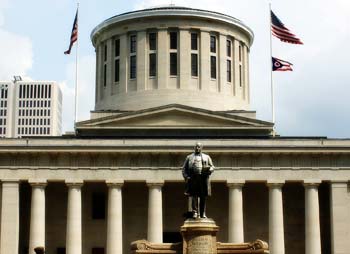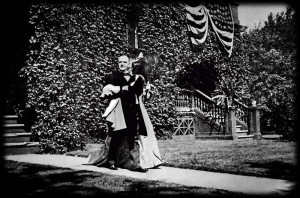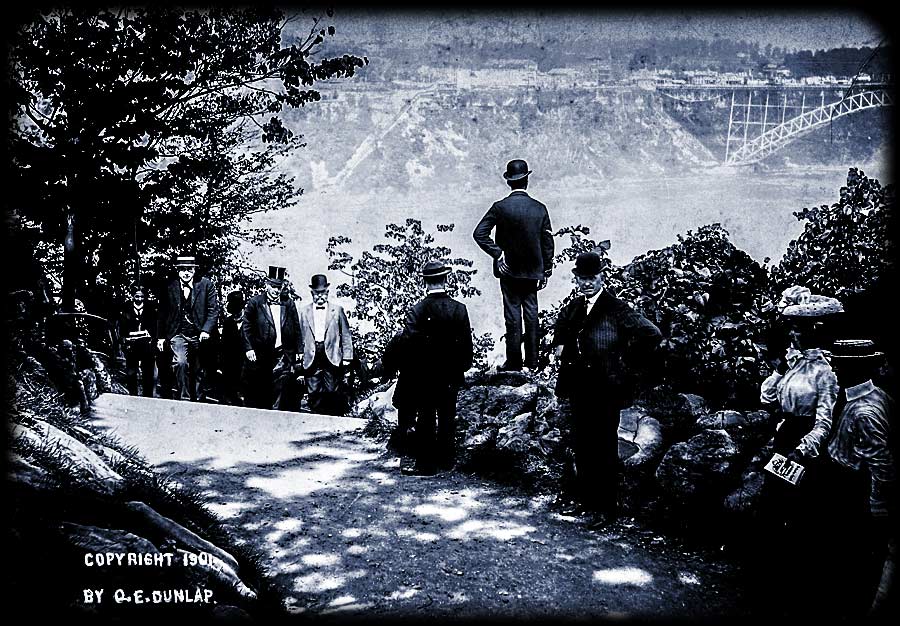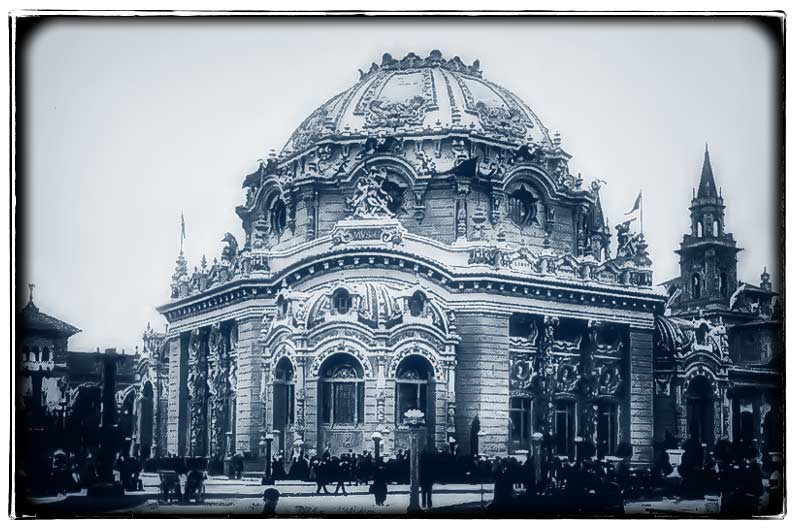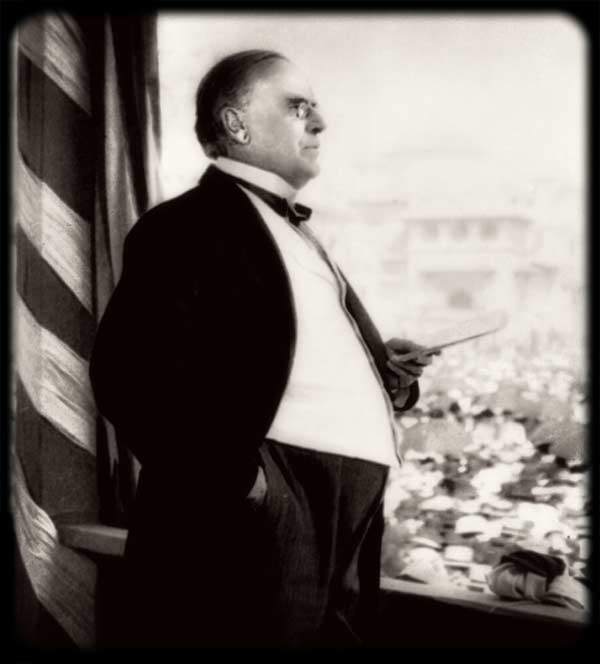What’s red white and blue, sometimes it is hoisted up one or two of the flag poles on the roof of Ohio’s statehouse, and oh yes, it’s not a flag?
On this day in 1902 the Ohio General Assembly enacted a bill authorizing the adoption of a new state flag. Till this day in Ohio history, Ohio did not have a state flag. Ohio had been a state for almost 100 years, but we had never taken the step of creating a state flag. But a year before this date, several historic events came together in such a way that the General Assembly felt compelled enough to adopt a new symbol for the Buckeye State – and those events happened in another state.
That state was New York where in 1901 the Pan-American Exposition was being held in Buffalo. The Exposition was a show place for countries from both North and South America. It also included exhibits from many states including Ohio. As part of the Ohio Exposition building, flew a new pennant designed by a Cleveland architect that he felt help draw attention to the building.
In 1900 Cleveland architect, John Eisemann, was the winning bidder for designing the Ohio Building for the 1901 Pan-American Exposition. Realizing that Ohio did not have an official flag, Eisemann went about creating a special flag to fly over the Ohio Building. It’s not clear whether Eisemann intended his creation to become Ohio’s flag or not. What he did want was something unique to fly over his building design. He even patented the flag with the U.S. Patent Office on July 23, 1901.
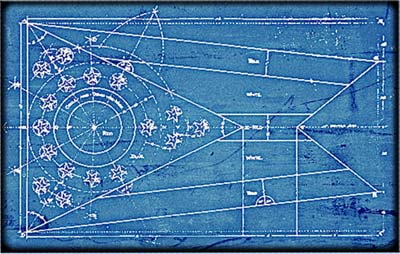
The Pan-American Exposition ran from May 1, 1901 to November 1, 1901. During those 6 months more than 8,000,000 visitors would pass through the gates each paying 25 cents for admission. Besides the debut of what would later become Ohio’s state flag, the fair also had a more tragic Ohio connection.
On September 6, 1901, former Ohio Governor, former Ohio Representative, and current 2nd term President of the United States, William McKinley, was assassinated at the Pan-American Exposition. He would die just 8 days later.
In the following months and years after McKinley’s death, Ohio pay tribute to the fallen leader in various ways. One of those was the adoption of a special scarlet carnation worn by McKinley throughout his political career. Known as the Lamborn Carnation, the carnation became known as the “scarlet carnation” and three years later it became the official state flower as a “token of love and reverence to the memory of William McKinley”.

The other was the adoption of the flag that was flying over the Ohio Building when the president was shot. Less than 8 months later, that flag would officially be adopted as Ohio’s flag which has been flying over public buildings since this day in 1902.
The Ohio state flag is the only “flag” of all the 50 state flags, that is not an actual flag. It’s really a swallow tail burgee, which means it is tapered like a pennant, but has the tip notched with a v-shaped cut out. The only other place the swallow tail burgee is commonly seen is on sailing ships, commonly seen on Lake Erie.

